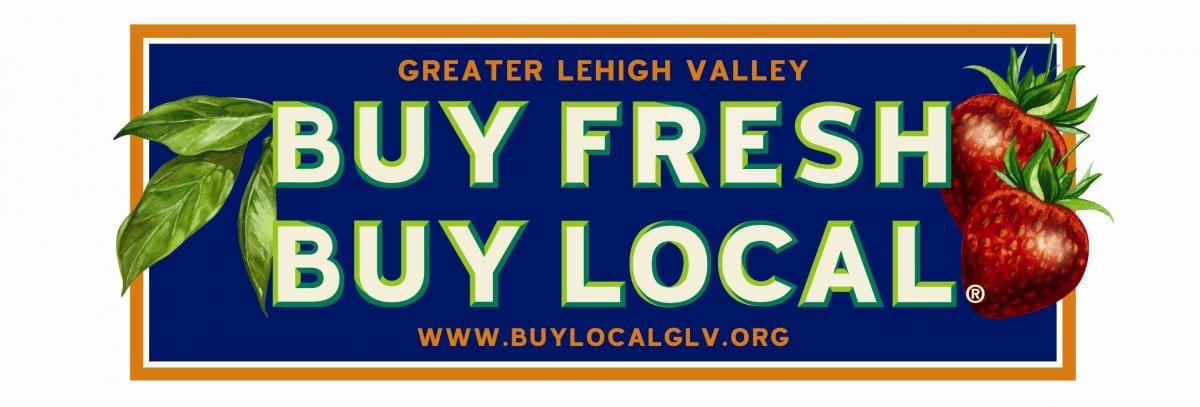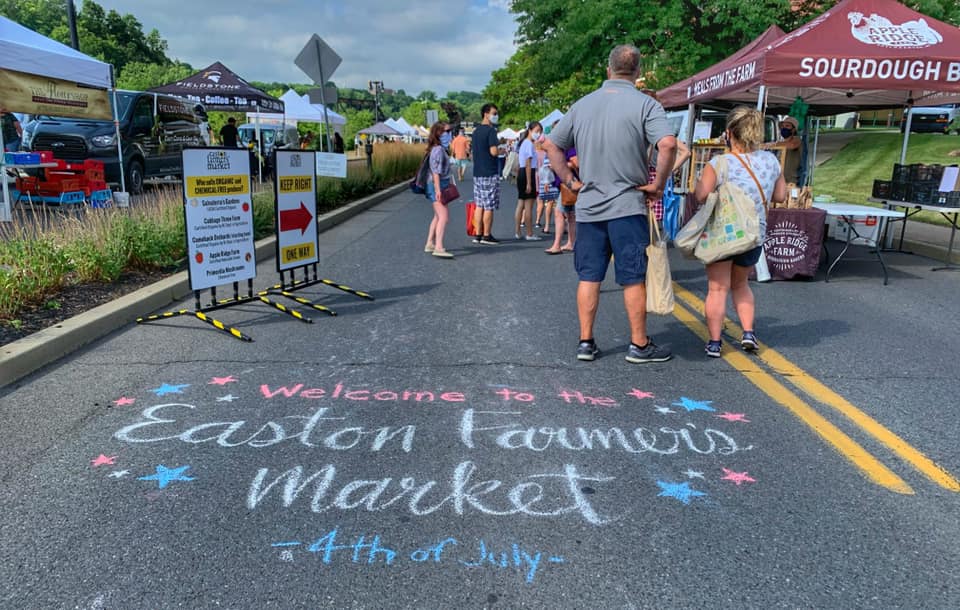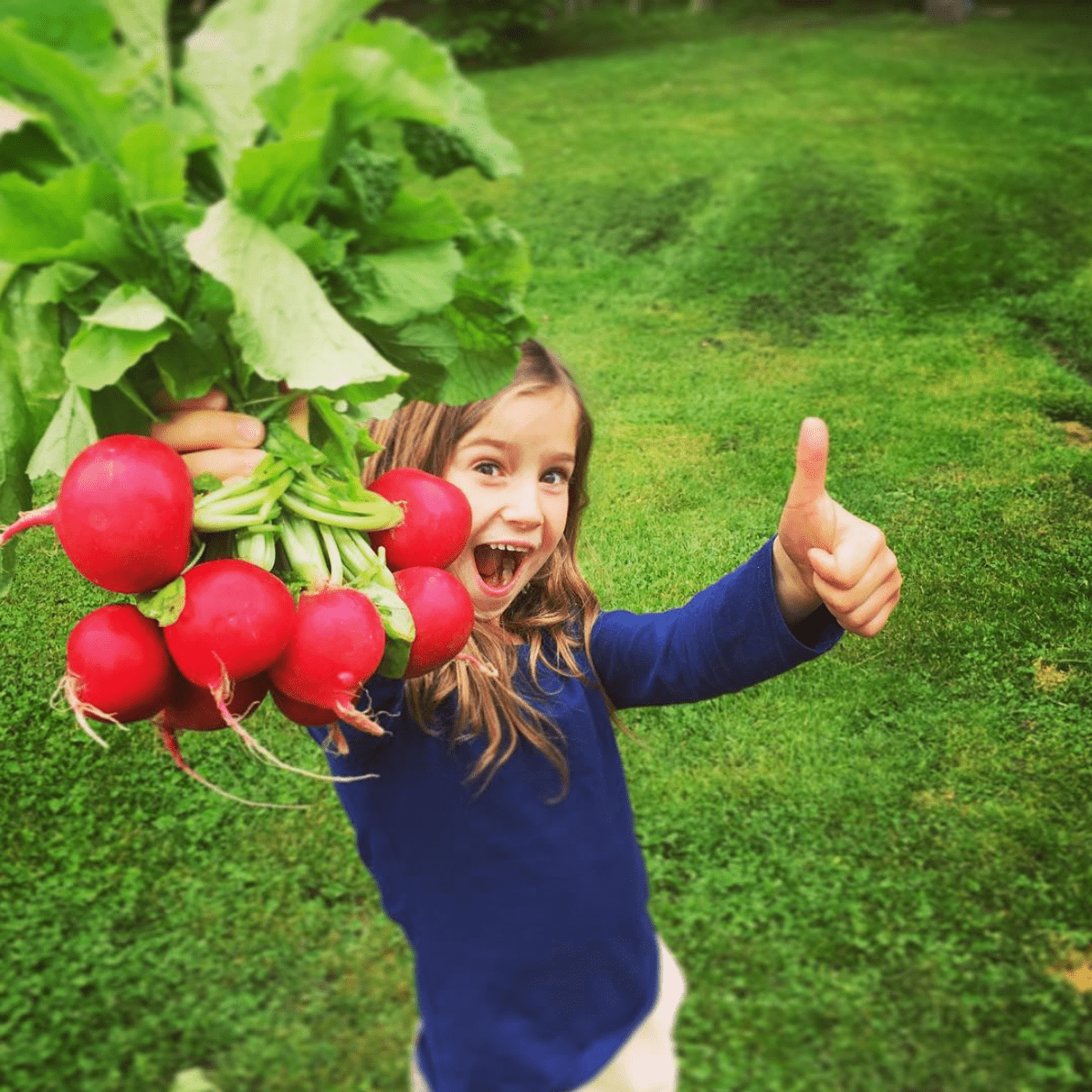
Imagine if the shelves of your grocery store’s produce department changed with the seasons, offering a variety of fruits and vegetables grown by local farmers in the Lehigh Valley. Or imagine only needing to pick up a few supplementary items at the store because you bought most of the food your family will need for the week at the farmers’ market. These are the types of visions for the local food system that Buy Fresh Buy Local of the Greater Lehigh Valley (BFBL-GLV) is working toward. BFBL-GLV is a program of the Nurture Nature Center run by director Allison Czapp and outreach coordinator Ellen Underwood. I talked with Ellen about how the range of programs BFBL offers to support local farmers and access to fresh food for all Lehigh Valley residents.
BFBL’s work benefits residents by improving fresh food access, farmers and local food providers by helping them connect their products to markets, and the community at-large through the economic, health, and environmental 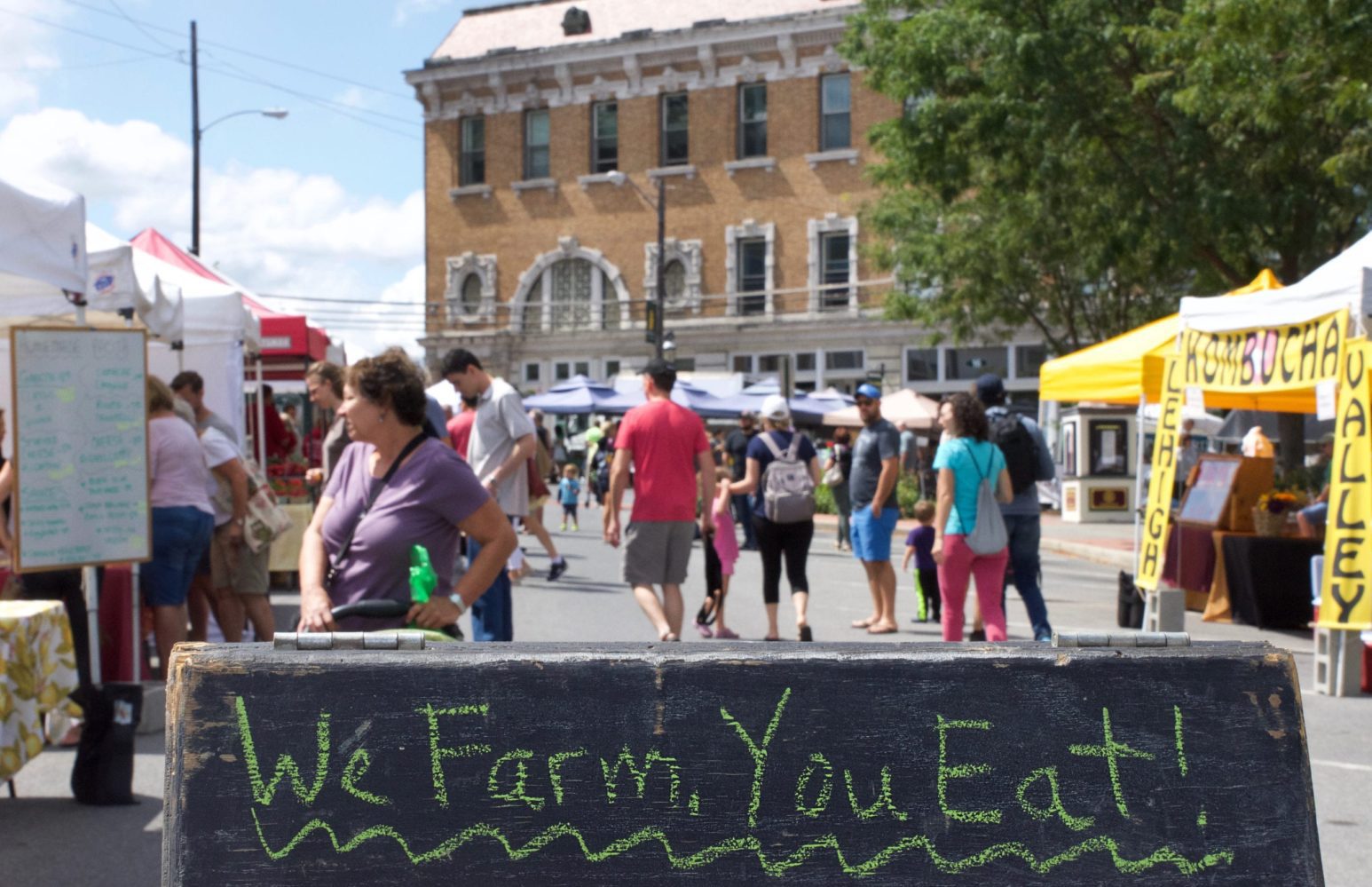 advantages of local fresh food. One of its most visible programs is the Fresh Food Bucks initiative funded by the USDA. At about 30 participating corner stores, farm stands, and farmers’ markets, people who are eligible for the Supplemental Nutrition Assistance Program (SNAP) can get free local produce. When you buy SNAP eligible items at these locations, the program will match what you spend up to $10/day in Fresh Food Bucks to be spent on fresh local produce. “It’s a great way for people to extend their food budgets and to incentivize people to eat healthier and local,” says Ellen. In 2019, over $20,000 of Fresh Food Bucks were used, improving access to local produce and benefiting farmers through increased sales. Another food access program BFBL supports is the Farmers’ Market Nutrition Program, which is a state program that distributes vouchers that can be used by mothers participating in the Women, Infants, and Children program (WIC) and low-income seniors age 60 and over to purchase produce directly from farmers. Participants can receive up to $24 in vouchers, and mothers can receive additional vouchers if they have multiple children. Although this is an important potential resource, rates of voucher usage have been dropping since 2015, and Ellen explains that’s where BFBL comes in, bolstering promotion, making sure information about the program is clear, and coordinating efforts with partners to address transportation and informational barriers for moms and seniors.
advantages of local fresh food. One of its most visible programs is the Fresh Food Bucks initiative funded by the USDA. At about 30 participating corner stores, farm stands, and farmers’ markets, people who are eligible for the Supplemental Nutrition Assistance Program (SNAP) can get free local produce. When you buy SNAP eligible items at these locations, the program will match what you spend up to $10/day in Fresh Food Bucks to be spent on fresh local produce. “It’s a great way for people to extend their food budgets and to incentivize people to eat healthier and local,” says Ellen. In 2019, over $20,000 of Fresh Food Bucks were used, improving access to local produce and benefiting farmers through increased sales. Another food access program BFBL supports is the Farmers’ Market Nutrition Program, which is a state program that distributes vouchers that can be used by mothers participating in the Women, Infants, and Children program (WIC) and low-income seniors age 60 and over to purchase produce directly from farmers. Participants can receive up to $24 in vouchers, and mothers can receive additional vouchers if they have multiple children. Although this is an important potential resource, rates of voucher usage have been dropping since 2015, and Ellen explains that’s where BFBL comes in, bolstering promotion, making sure information about the program is clear, and coordinating efforts with partners to address transportation and informational barriers for moms and seniors.
So why is it so important to have local farmers and access to local food? BFBL lists 5 key reasons on their website: taste, health, supporting family farms, environmental benefits, and our local economy. Ellen explains something I hadn’t really thought about before – in a time when 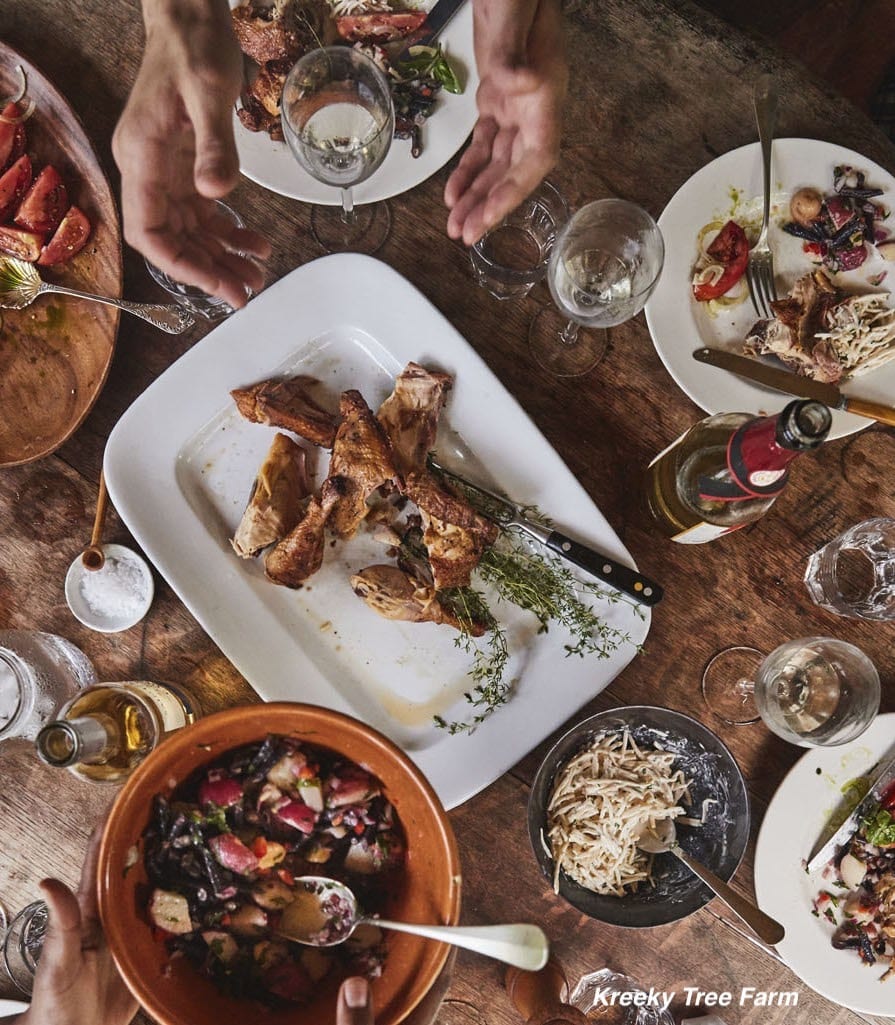 many people are concerned about development in the Lehigh Valley and the construction of warehouses, we have to support local farmers if we want to preserve farmland and open space. “Small and medium farmers are connected to the land and want it to be sustainable for the next generation of their family. Since farmers are connected they care about the land and what it is they are providing to people,” she says. Having local farmers provide food to local residents supports better job opportunities and keeps area business alive, while also giving people more choices to buy food where they want to and where they know producers are using practices that they agree with.
many people are concerned about development in the Lehigh Valley and the construction of warehouses, we have to support local farmers if we want to preserve farmland and open space. “Small and medium farmers are connected to the land and want it to be sustainable for the next generation of their family. Since farmers are connected they care about the land and what it is they are providing to people,” she says. Having local farmers provide food to local residents supports better job opportunities and keeps area business alive, while also giving people more choices to buy food where they want to and where they know producers are using practices that they agree with.
Okay, then how about the flip side – given that local food is so beneficial, why aren’t we all eating it already? What are some of the barriers to address? BFBL is undertaking a market research study of people who aren’t using farmers’ markets or other sources of local food to gain insight into some of those challenges. One thing Ellen notes is that, more often  than not, people just forget. We’re used to going to the grocery store and the convenience of getting all of our food there, our schedules are hectic, and so we don’t keep in mind when our farmers’ markets are. “So that’s [BFBL’s] role,” Ellen says, “putting local foods at the forefront of people’s minds, and making that normal again. That’s what people used to do [go to a market or directly to a farmer to purchase food], but our society has changed a lot.” People also may lack knowledge about some types of local produce and how to prepare them, and it can be hard to distinguish true local food from food that is purchased elsewhere and sold at a resale market that is branded as a “farmers’ market.” BFBL runs a variety of consumer education efforts to help address these issues, as do partners such as the Kellyn Foundation or Easton Garden Works. An additional barrier is transportation, especially for Lehigh Valley residents who live in a food desert – an area that is not within one mile walking distance of a grocery store. If the closest place you have to shop is a corner store, it might be hard to find healthy options, which is why the Fresh Food Bucks program brings local produce into corner stores, removing part of this barrier.
than not, people just forget. We’re used to going to the grocery store and the convenience of getting all of our food there, our schedules are hectic, and so we don’t keep in mind when our farmers’ markets are. “So that’s [BFBL’s] role,” Ellen says, “putting local foods at the forefront of people’s minds, and making that normal again. That’s what people used to do [go to a market or directly to a farmer to purchase food], but our society has changed a lot.” People also may lack knowledge about some types of local produce and how to prepare them, and it can be hard to distinguish true local food from food that is purchased elsewhere and sold at a resale market that is branded as a “farmers’ market.” BFBL runs a variety of consumer education efforts to help address these issues, as do partners such as the Kellyn Foundation or Easton Garden Works. An additional barrier is transportation, especially for Lehigh Valley residents who live in a food desert – an area that is not within one mile walking distance of a grocery store. If the closest place you have to shop is a corner store, it might be hard to find healthy options, which is why the Fresh Food Bucks program brings local produce into corner stores, removing part of this barrier.
If what’s holding you back from making full use of our local food system is a lack of information or familiarity with it, BFBL offers some great resources to check out. An interactive Local Food Finder maps farms, farmers’ markets, bakeries, dairies, restaurants that focus on local foods, and more. The free Local Food Guide features these locations as well as a harvest calendar so you can see what is in season in our area throughout the year. In Easton, the Easton Farmers’ Market is a fantastic place to meet some of our local producers and buy your fresh foods for the week. It also offers Fresh Food Bucks and accepts Farmers’ Market Nutrition Program vouchers. Local fresh foods are a simple and enjoyable choice with many cascading individual and community benefits. BFBL helps to ensure that they’re a choice everybody can make!
All images are from BFBL-GLV/Ellen Underwood

